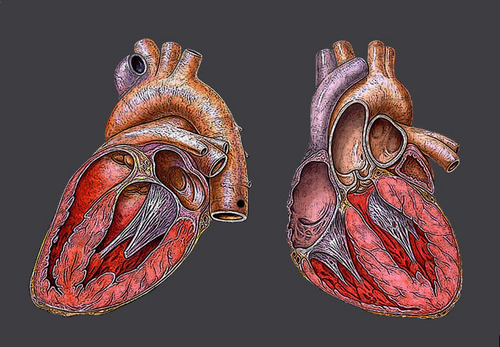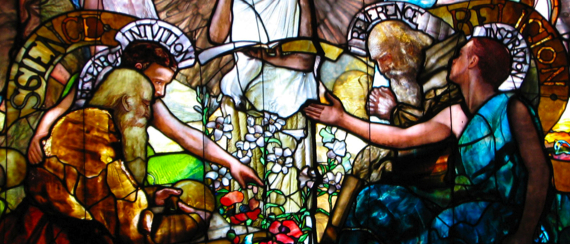 The four chambered heart is essential to the existence of warm-blooded animals. The division of the heart into two atriums and two ventricles allows the heart to completely separate the flow of blood to the lungs and the rest of the body. However, while mammal and bird hearts consist of four chambers, the hearts of amphibians have only three. Meanwhile, there is debate over whether reptilian hearts have four chambers (with two ventricles) or three chambers (one ventricle). One thing is certain, however: the emergence of the second ventricle marks a major evolutionary milestone in the evolution of warm-blooded animals from cold-blooded ancestors.
The four chambered heart is essential to the existence of warm-blooded animals. The division of the heart into two atriums and two ventricles allows the heart to completely separate the flow of blood to the lungs and the rest of the body. However, while mammal and bird hearts consist of four chambers, the hearts of amphibians have only three. Meanwhile, there is debate over whether reptilian hearts have four chambers (with two ventricles) or three chambers (one ventricle). One thing is certain, however: the emergence of the second ventricle marks a major evolutionary milestone in the evolution of warm-blooded animals from cold-blooded ancestors.
Now, scientists are one step closer to understanding this important evolutionary step thanks to the recent research of a team at the Gladstone Institute of Cardiovascular Disease. Their research focuses on the transcription factor Tbx5, which is responsible for turning other genes in the heart on or off. Previously, scientists knew that Tbx5 was responsible for congenital heart defects, specifically defects in the ventricular septum–the dividing wall in the ventricle. In humans and other mammals, the concentration of Tbx5 is high in the left ventricle and low in the right, with the boundary between the two levels occurring where the septum divides the ventricle in two.
To follow up, the researchers studied the concentration of Tbx5 in turtles and green anole lizards–two reptiles. In the lizard, which only has one ventricle, Tbx5 concentration remained constant throughout the heart’s development. However, in turtles, which have a primitive ventricular septum, a left-right gradient of Tbx5 activity developed. This gradient, however, emerged later and less sharply in the turtle than in animals will a clearly-defined septum.
To test the idea that Tbx5 plays an important role in the division of the ventricle into two chambers, scientists engineered mice to express Tbx5 in a way similar to the turtle’s heart. The result was mice with a heart resembling a turtle’s heart–with a primitive septum–rather than the clearly formed ventricular septum found in normal mice. The research seems to indicate that the expression of Tbx5 is key to the formation of two ventricles as opposed to one. In other words, Tbx5 is at least in part responsible for the emergence of the four chamber heart.
Furthermore, the research also indicates that the evolution of certain genetic regulatory elements caused the Tbx5 gene to form a sharp boundary of expression and therefore caused the ventricle to form two closed chambers. Researchers are now searching for more clues about this unknown regulatory element. More importantly, the discovery could help scientists better understand how congenital heart defects–the most common of all birth defects–occur. For now at least, the team has provided some of the first new information on the evolution of the four-chambered heart in over 100 years.

